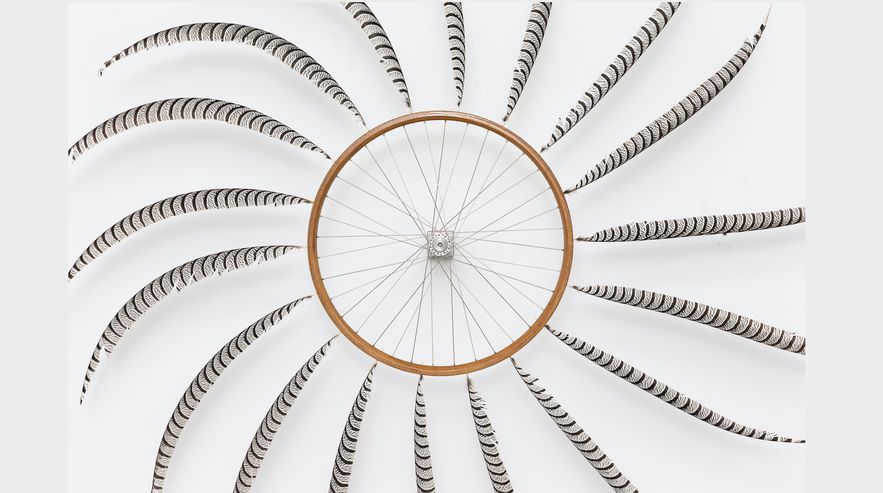The famous DS… Here she is one of the stars of the new route – with a very circus title, Parade – collections from the MAC in Marseille, on the occasion of its reopening in April, after a facelift that lasted four years. The most famous work of Gabriel Orozco, a native of the State of Veracruz in Mexico, in 1962, a car reduced to a third of its original dimensions (the central cabin sprayed, the side parts assembled), sits in good place. The object, created in 1993, forty years after the design of the iconic DS, emblematic of the presidency of the French Republic at the time and of the new wave on the big screen that accompanied it, was then the first piece of the artist dedicated to the mythologies of urban traffic, where “recycling, history, play, sculpture are summoned”, underlines Thierry Ollat, future ex-director of the MAC (he will retire in July to hand over the reins to Stéphanie Airaud) who does the honors of the visit. Through this daring reduction, Orozco accentuates the speed of the four-wheeled symbol, even if devoid of an engine, the car seems frozen in a snapshot, born of a process that the artist calls “extraction and reconfiguration”: modifying rather than creating nine.
Gabriel Orozco, “The DS”, 1993.
/ © Gabriel Orozco / Cnap / Photo City of Marseille W. Squittieri
A short distance away is another vehicle: the Renault 977 VL 06 compressed by César four years earlier, in 1989. It was at the end of the 1950s that César Baldaccini discovered across the Atlantic the machines capable of compacting the galvanised steel. “The arrival in the Renault factories of the first hydraulic press in France enabled it, from 1960, to carry out car compressions”, recalls the commissioner. They will cause a scandal, these crushings operated by the artist, before establishing him as a leading figure of the New Realists and then turning him into an icon of art, thanks to this appropriation of an industrial object. “In my head, it’s me who presses, I’m the machine, I’m one with it,” he said.
In 1985, it was the adopted Marseillais Richard Baquié, who died prematurely in 1996, who tweaked his four-wheeler. One of his most famous animated works, Love meis exhibited in the last room of Parade, the “Mac room”. A Plymouth Valiant, straight out of a road movie or a Weekend revised by Godard, is cut, like a torn heart, into four pieces – doors, hood and trunk – arranged at the four cardinal points, while in the center a fan blows which makes the refrain barely audible come first broadcast in the background and the flood of information poured out simultaneously by the radio.

Paola Pivi, “Same mother”, 2017.
/ © Courtesy Perrotin and the Artist / Photo Claire Dorn
Suffice to say that it rolls for the MAC. Thus, Paola Pivi welcomes us, from the entrance hall of the museum, with an installation of bicycle wheels decorated with bird feathers, spinning in the air. The winner for Italy of the Golden Lion of the pavilion at the 1999 Venice Biennale, who has since become a star of contemporary art internationally, likes to evoke social and environmental issues in her works, which are as spectacular as they are playful. As part of a temporary exhibition dedicated to him until August 6 as a prelude to the eclectic Parade, his surname slams like a loss leader. His giant monochrome bears unfold there, while his gigantic and unprecedented Free Landscape, a suspended slide-maze, made of denim, invites the visitor, wearing flashy pink socks, to walk blindly through its meanders. Like the course that follows, surprising in more ways than one.
